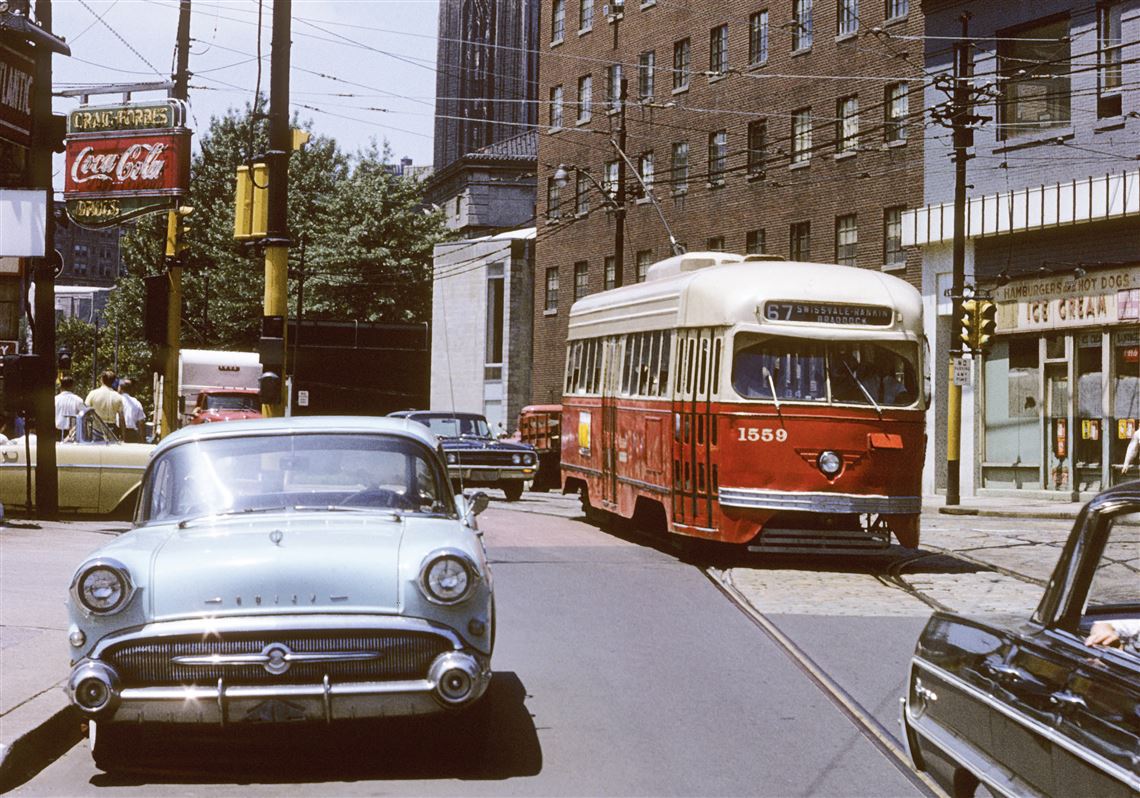Before buses and the T, a streetcar system served as the region’s dominant public transportation, with about 1,700 trolleys and more than 600 miles of track at its peak during World War II.
Since 1954, the Pennsylvania Trolley Museum in Chartiers, Washington County, has preserved pieces of that history, amassing a collection of trolleys and drawing tens of thousands of annual visitors to explore the museum’s exhibits and ride vintage streetcars.
The museum recently published a new book, “Pittsburgh: Streetcar City” (Pennsylvania Trolley Museum, $29.95). It’s available at the museum’s website, pa-trolley.org.
The museum is also hosting an exhibit with the same title in conjunction with the book and featuring some of the same images.
The book is a lavish ode to the streetcar system, complete with historical analysis, images from the 19th and 20th centuries and detailed listings of former routes. The text is based on the writings of Tom Parkinson, who began his research in the 1960s. That text was adapted and expanded by a consortium of individuals.
“It really was a major system,” said Scott Becker, executive director and CEO of the Pennsylvania Trolley Museum. “It was very well-run, the lifeblood for the city at the time.”
The book explains how in the 1800s, Pittsburgh’s major transportation routes were its rivers, as roads hadn’t been paved and bridges were less ubiquitous than they are now. The streetcar system connected city neighborhoods to each other and the city to neighboring communities. In the late 1960s, after decades of population decline, authorities drastically reduced the number of operable streetcars down to only about 95 cars and 25 miles of track. Eventually, trolleys gave way to personal vehicles, buses and the light rail transit system known as the T.
“The book isn’t written for the trolley fan. It’s really written for the general public,” Beck said. “It’s the perfect tool for anyone who remembers Pittsburgh or wants to learn more about the system.”
The museum printed 1,000 copies initially, but due to strong sales Becker said he expects to reprint.
At the back of the book is a reproduction of a 1949 map of the trolley system. The museum is in possession of the original map, which is 18 feet long by 9 feet high.
Jeremy Reynolds: jreynolds@post-gazette.com or 412-263-1634, twitter: @Reynolds_PG.
First Published: May 20, 2022, 10:00 a.m.


















